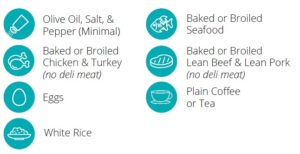How is breath testing currently used in gastroenterology?
Breath testing in gastroenterology is a non-invasive and straightforward way for health care providers to diagnose common sources of digestive distress.
This digestive distress can result from bacteria entering and proliferating the small intestine, producing trace gases not usually generated by the body. Having a higher level of hydrogen or methane in exhaled breath typically indicates a problem, which can be from sugar intolerance or bacterial/archaea overgrowth.
Breath testing can help detect gastrointestinal conditions, including:
- Small Intestinal Bacterial Overgrowth (SIBO)
- Intestinal Methanogen Overgrowth (IMO)
- NOTE: New guidelines outlining the distinction between hydrogen-related SIBO and methane-related SIBO have led to the reclassification of methane-related SIBO as IMO.
- Lactose Intolerance
- Fructose Intolerance
- Sucrose Intolerance
- Helicobacter Pylori (H. Pylori)
What to expect during breath testing
When undergoing breath testing for gastrointestinal conditions, the patient consumes a sugar substrate mixed with water to drink on the test day. Before ingesting the substrate, the patient collects a baseline breath sample. Then, after ingestion, the patient will have to exhale through a straw into a collection tube every 15 minutes for SIBO & IMO breath tests and every 40 minutes for Lactose, Fructose, and Sucrose breath tests.
After testing, the filled test tubes are returned to the laboratory for analysis, with results reported to the health care provider within 24-48 hours.
The Importance of Diet and Preparation on Breath Testing
 The key to a successful breath test lies in the preparation completed in the days, and even weeks, before test day. In conjunction with the breath testing provider, health care providers will provide instruction for a diet regimen for the day before the test, and patients need to follow it to ensure they receive the most accurate results.
The key to a successful breath test lies in the preparation completed in the days, and even weeks, before test day. In conjunction with the breath testing provider, health care providers will provide instruction for a diet regimen for the day before the test, and patients need to follow it to ensure they receive the most accurate results.
Since food is a common trigger for digestive distress, patients need to consume food that will not produce inaccurate results when performing a breath test. The goal of the pre-test diet is to starve the digestive bacteria for the day before the test. However, this does not mean that patients can’t eat the day before their test; they just have to modify their diet.
How to Prepare for a Breath Test
SIBO bacteria love plant products and sugars (i.e. fermentable carbohydrates), so patients should avoid them the day before their breath test. Since it can be hard to know what food falls into these categories, following the diet listed in the instructions provided by your health care provider and/or breath testing company is necessary to ensure a valid breath test result.
Since the health care provider is trying to determine what conditions affect a specific patient, it is essential for that patient only to eat food they would typically consume. If there is an item on the permitted list that the patient would not normally eat, now is not the time to add it to their diet.

Patients also typically must follow a low fiber/FODMAP diet, which tends to be a bland diet, for the day proceeding the breath test. There are plenty of low FODMAP herbs and spices that can add flavor to your pre-test meal.
Twelve hours before the breath test, patients need to fast. Therefore, health care providers recommend that patients sleep most of the time during the fasting period to make it easier on their bodies.
For patients taking medications, health care providers should work with the patient to ensure that it is safe to discontinue taking them while fasting. Patients should consult with their health care providers about any potential complications from following a strict diet.
Correctly following the instructions for use provided in the breath test kit significantly decreases the chance of receiving inaccurate results and puts patients one step closer to determining the cause of their digestive distress.

